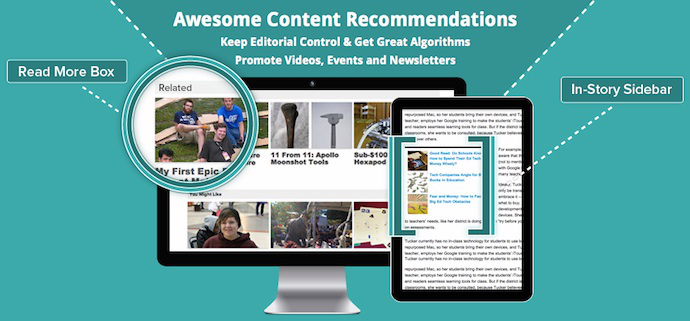With the latest expansion of its content recommendation tools, startup Contextly isn’t just pointing visitors to relevant articles, but videos and products, too.
Co-founder and CEO Ryan Singel (a former editor at Wired) told me that this is “doubling down” on the company’s current strategy.
As Singel has said in the past, he’s taking a different approach from content recommendation services like Outbrain and Taboola, which take visitors to other sites. Contextly is all about keeping visitors on the same site; by convincing them to read additional articles, it hopefully turns them into repeat visitors and long-term fans.
With that in mind, the new features seem like a natural move. If you’ve got different types of content on your site, why limit yourself to news articles? Video, after all, is becoming increasingly important to online publishers. And the commerce offering highlights the fact that content is becoming increasingly important to many online stores.
You may, incidentally, be seeing a “related video” widget next to this very post (or below it, if you’re on a smartphone). But one thing that’s different about Contextly’s approach is that it treats all this content similarly, rather than creating separate widgets for articles and video.
The company offered a few more details about the new features in a blog post, saying it’s now using its existing “smart data analysis and recommendation system to provide a far more comprehensive set of recommendations for publishers that make videos and sell items.” To illustrate that, it points to this how-to post on Adafruit about making a Fire Tie, where it makes sense to point readers to a product that’s mentioned in the article and to a demo video.
In an email, Singel elaborated how this represents an increased commitment to Contextly’s core strategy:
Our focus is on computational journalism, using our tools that identify relevant, trending, evergreen and personalized content to give readers an awesome experience. In an age of drive-by readers and social networks with ever-changing algorithms, the future will belong to publishers that forge real connections with their readers.
Meanwhile nearly all of other companies that use some of the same real estate on publishers’ pages that we use are focussing on how to fill that space with ads. And all too often, these recommendations don’t disclose these are paid ads. We see lip service being given to “engagement” or “content discovery,” but these companies’ focus on traffic arbitrage.
